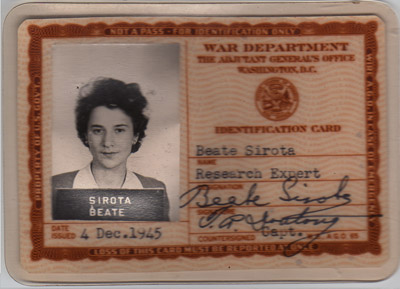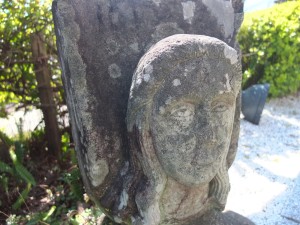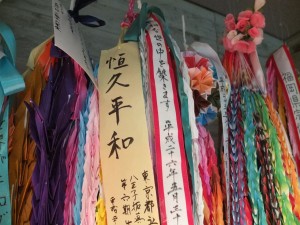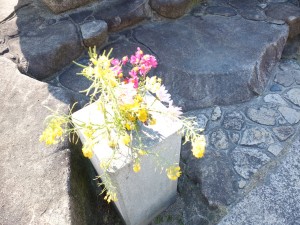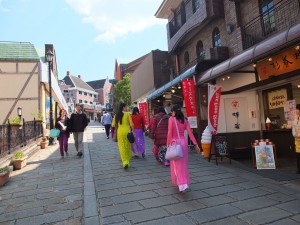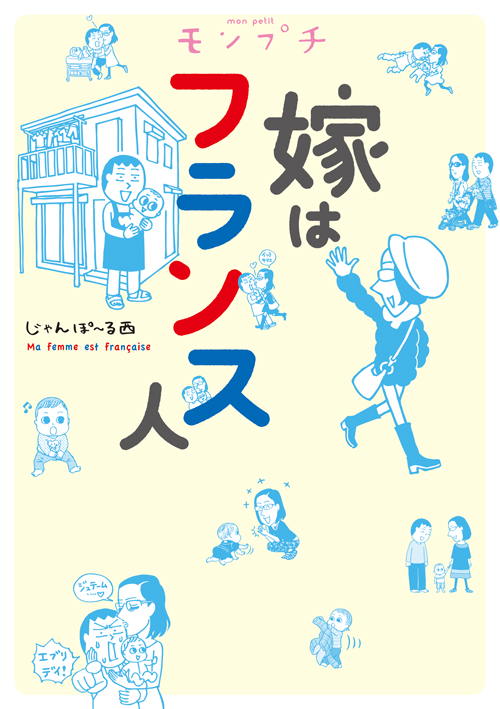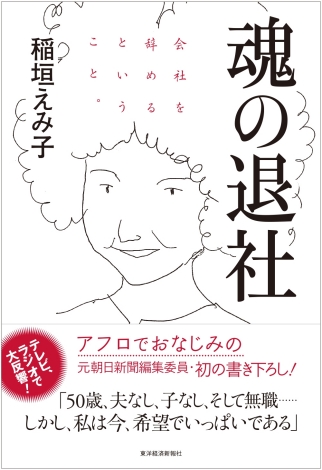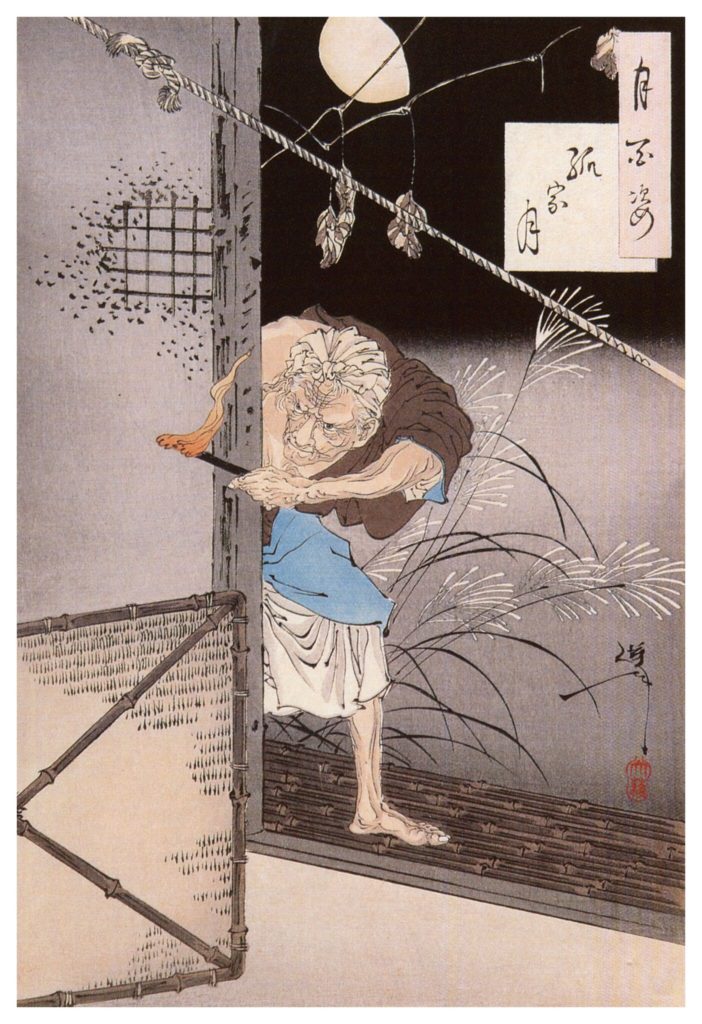This is the fourth in a series of short fiction by Ms. Kaori Shoji entitled “The Amazing Japanese Wife” about international marriages in Japan gone off the deep end. This is the first of the stories told from the women’s perspective. Any similarity to real events, persons, or incidents are your imagination and probably means that you really should have a stiff drink and contemplate the meaning of happiness, karma, and the universe. You need Suntory time. Previous chapters are below, although not all stories are clearly connected.
The Amazing Japanese Wife: Part 1
The Amazing Japanese Wife: Part 2 “Fucked Up In Six Trees”
The Amazing Japanese Wife: Part 3 “A Man Needs His Carcinogen”
![]()
I hear his car slow down, approaching the driveway, and immediately feel nauseous. I take a breath and will the corners of my mouth to turn upwards. Americans always smile and two years of Oakland living has convinced me that Northern Californians are the smiliest Americans of all. With dazzling white teeth and clear eyes, these people broadcast an unshakeable confidence, a mineral streak of inner satisfaction embedded right in the bloodstream. At first, it was unnerving to see all those supremely happy expressions, the isense of entitlement apparent in their every movement, even in the way they waved to each other from their cars, under the bright blue Californian sky. What if they had problems, like their houses burned down or spouses betrayed them or…what then?
“The point is not to BE happy, it’s to assimilate a SENSE of happiness,” said my friend Mayu-san, about a year after I got here with my husband Douglas. “Whatever is happening in your personal life, it’s only polite to present your best and happiest self. That’s how it works around here. Anything that’s not suitable for Facebook, isn’t suitable for real life.”
I remember that moment because Mayu-san never said anything out of the ordinary and suddenly there she was, articulating words that pierced me with the spear of truth. I think I responded with my mouth agape, just looking at her. And then the moment ended, Mayu-san went into the kitchen to get more drinks and the afternoon picked up where it left off–mired in banalities.
Still, Mayu-san’s words surface in my consciousness from time to time, like right about now when Douglas turns the key in the lock and walks into the foyer. I go over to greet him and we exchange a light hug. “Hey Eri,” he says. “God, what a day.”
And I follow him into the kitchen, quelling the urge to retch. Another wave of nausea washes over me like polluted sea water. “Are you tired?” I ask in Japanese and he answers in English though I’m no longer listening. He’ll want to have a Bloody Mary, and then a bite to eat and then he’ll get ready to go to the gym. I calculate that in a little over two and a half hours, Douglas will be gone again. I feel my composure returning.
This nausea thing has been going on for the past 3 months. I haven’t told Douglas because he’ll immediately say: “You’re pregnant! I gotta call my dad!” . Then, I’ll have the horrible task of telling him that no, that’s not it and no, it’s not worth going to a doctor (because I already had a check-up four months ago) and yes, I was fine. Fine. Smile. Confidence. Happiness. Words to live by if you want to survive in California.
Not that I’m not having a good time. Everyone I know back in Japan is so envious of the life I have out here, the privileges of being a wife in Silicon Valley, with her own Honda to get around in and her own circle of friends consisting of well-to-do Japanese women. There’s a whole club of them here, and when we stroll around the malls together or have lunch at a swank restaurant, white men stare with frank interest. I never knew Japanese women had such magnetism in the US, I always thought everyone preferred blondes, period. Everyday I get compliments about my smooth skin, petite figure, my flawless fashion and femininity. At parties, men come up to flirt and seem enthralled that my English isn’t that great. I also discovered that there’s a gated community known locally as ‘The Japan Palace,’ where tech moguls like Jerry Ang and the CEO of Oracle live with their Japanese wives, in huge, splendid villas.
In my head though, I’m constantly making excuses to friends and family back in Japan about my wonderful Californian life. It’s not THAT great, I would say weakly. In these imaginary conversations, I’m mostly talking to my mother or my female colleagues back in Tokyo who are trying to juggle kids, day care and a full-time job while clutching at the last strands of youth before collapsing into middle age.
Really, I say to them. Silicon Valley is the most expensive place on the face of the earth! Our rental house costs a little under 3000 dollars a month but that’s because we have only 2 bedrooms and even then the locals told us what a bargain and an exceptional piece of luck. And: A packet of organic eggs came to 6.50 at Whole Foods before the Amazon merger lowered that by about 1 dollar, like yeah, that’s supposed to make everyone feel better! And the Californians make such a big deal about the Farmer’s Markets but the produce is about 40 percent more expensive than the supermarkets in Tokyo. We can never afford to have kids, because day care is just too costly and nannies are..
What I leave out is this: I don’t want children. I’m fine with being a Japanese Wife but I would never want to be a Japanese Mother. I think about sex with Douglas, and a spasm of pain shoots up from the bottom of my spine to the back of my eyes. Mayu-san who has two kids with her husband Michael, told me that unlike Japanese husbands, American men will demand sex after childbirth and fall into black rages if their wives refuse. Mayu-san shrugged and said it was a trade-off but she didn’t specify what she was getting in return. Something she didn’t care to post on Facebook, I guess.
I recall the thrill and slight disgust of making love to Douglas for the first time and how, during the course of our dating, he never wanted to use a condom. “In America, a lot of women would qualify this as rape,” he’d say matter-of-factly as I wiped his goo off my chest. “But Japanese women love it, don’t you sweetie?”
Last month on our wedding anniversary he took me to French Laundry for dinner and then in the car heading back, leaned over and said: “I’m a great husband, aren’t I? Now you have to be extra nice to me tonight.” The fact that he said this in Japanese secretly enraged me but I laughed it off. Later, at home, after he was finally done, I locked myself in the bathroom and gargled with mouthwash over and over and when I came back to the bed, Douglas said “hey baby, did you have a good time? Oh, by the way, don’t tell my mom I took you to French Laundry, she’s dying to go but Dad’s never taken her.”
Unsuitable for Facebook again.
Once the voices in my head die down, I find myself calmly going through the day. After all, why worry? Life is so good here, and so easy. Douglas is fine with eating cereal for breakfast, he never wants to bring a Bento box lunch like he did when we were living in Tokyo. For dinner, he just grazes on whatever’s available in the fridge, a glass of vodka clutched in one hand. I make my own meals but apart from weekends when events like pot-luck parties and brunch with Douglas’s parents crowd my calendar, I never cook anything elaborate. I don’t have to, and when I think of how hard I used to work in Tokyo, earning a steady income and being the good Japanese wife, I can’t help scoffing at my poor, overworked self. If there was a time machine, I would use that to go back and tell my 36-year old self to relax. In a little while, I would be crying to my husband Douglas that I was sick of Japan and Tokyo. I would implore him to get a lucrative tech job in Nor Cal. And then I would move to a real American home with a backyard and two-car garage. So go easy on yourself because you will be SO all right, I would say. And now? Apart from this nausea and the suspicion that deep down I hated Douglas, I was having the time of my life.
“Just don’t go to Whole Foods, and avoid that fucking Aveda place like the plague,” Douglas said when we first got here. “Man, talk about overpriced BS.” Already, he was mixing Americanisms in his conversations, ignoring the fact that I couldn’t understand half of what he was saying. Not that it bothered me. In Tokyo, where we lived for 5 years before coming out here, Douglas would often launch into long diatribes against the Japanese government, Tokyo life, the joylessness of Japanese society and why we were so ‘insular’ and ‘defeatist’ and ‘fucking depressed.’ I didn’t really understand then, either.
To me, it was all the same. I grew up in a typical Japanese salariman household and there was never much smiling going on. Depression was more or less the norm. As far back as I can remember, my parents had bickered and fought. My mother sighed and washed the dishes by hand and acted tired to the very dregs of her existence, every single day. Her mantra in life went to the tune of: it was a terrible thing for a woman to be a wife and mother, tied to household drudgery for life. But equally terrible was to remain single. Either way, a woman was doomed. And then she would bend over the sink filled with dishes and it would be time for me to go to cram school, so I could at least get into a good university before becoming the ill-fated wife/mother to carry on the cycle of Japanese womanhood.
But even my seemingly miserable mom perked up whenever there was a family event, like my brother being promoted and sent to his company office in London. Or my sister’s wedding, when Mother splurged on a formal kimono with a price tag that enraged my father. He had just spent 5 million yen (a little over 50,000 USD) in getting his older daughter married and settled down and was devastated to see that his wife had gone and spent another million yen on what he saw as a completely unnecessary extravagance. “How can you say that?,” my mother wept and screamed. “All my life, I gave everything to this house and the family and now I can’t buy a little something for myself?” When she calmed down, my mother said plaintively that she will wear the same kimono at my wedding, so this purchase was actually a money-saver.
Well, she lied. Seven years later I had my own wedding in Honolulu and my mother bought a flowing silk summer dress with a hat and heels and a Fendi handbag she has never used since and is tucked away in a closet crammed with similar “little somethings” she had bought for herself over the years. “Japanese women are scary,” Douglas said to me when I told him about it. “That’s what happens when men let housewives hold the purse strings. It’s just stupid to do that, I don’t get why the majority of men in this nation insist on making their own lives miserable. I never would.” True to his word, back in Tokyo, Douglas and I had separate bank accounts. He would hand over 200,000 yen out of his payment every month. I would spend another 150,000 to cover the rest of our monthly expenses. But I had another, secret account from when I was single, in which I hoarded my personal savings. That account is still in Japan, waiting for me. I learned from watching American TV that this was called a Fuck Off Fund. Douglas was only half right – Japanese or American, women are scary. How else were we going to protect ourselves?
I have money on my mind a lot because I worked in a Tokyo bank for 16 years and 10 of those years were spent at the counter, counting the customers’ cash and helping them with their little financial problems. I wore a suit and heels to work but changed into the bank uniform once I got there, in the women’s locker room with 23 other females. I worked 10 to 11 hour days, rode a crowded train for 2 hours everyday and by the time I hit 30. I was exhausted. I was more than ready to quit the job and get married. Never mind that I would be tied to housework for life – at least I could stop forcing my body every morning into the bank uniform with its tight skirt and tiny vest. I told Naolki- my boyfriend of six years what I was feeling and he said, okay we may as well take the plunge.
But a week after this dicussion he injured a knee playing futsal–which is like indoor soccer for Japanese salarymen.He was in the hospital for 2 weeks. During that time, he got real friendly with the other patients on the floor, all with sports injuries. One of them was a 17-year old girl who hurt her spine playing volleyball for her school team. She wasn’t one of those sex-kitten high school girls of Japanese media lore – she was in fact, so wholesome and exuberant she made everyone laugh just by showing up for medication at the nurse statiom. Her hair was short, her limbs too long, she was clumsy and had no sensuality to speak of. Yet, my boyfriend fell head over heels for her.
“She’s young, she’s SO young,” he kept saying, as if I didn’t get it the first time. He talked incessantly about the latest funny thing she did, how she bit into an apple without peeling the skin, how she giggled with her family when they came to visit, and broke down in tears when they went home. “She reminds me of what it’s like to be 17 again,” he said wistfully, and would engage her in long conversations about volleyball (he too, had played in high school) and help her with school work so she wouldn’t lag behind. By the end of those 2 weeks, I really had enough of this but didn’t know how to tell him without sounding like a jealous nag. And then my boyfriend Naoki looked me right in the eye and said: “I can’t marry you. I’m sorry. I just can’t.” I did put up a fight, telling him it was just an infatuation that would go away but he shook his head. “It’s not her. It’s just that the thought of marriage is suffocating to me. It’s got nothing to do with you personally.”
Three years later when he was 33, Naoki married a woman aged 26, and the whole thing was so wounding I took time off and spent three days lying in my bed at home. By that time though, I had come to realize the horrible truth about being a woman in Japan – the options dwindle with each passing year and the number 3 at the left side of one’s age may as well have been a poisonous smudge. Up until age 29, I was used to male attention and could count on a few invitations a week to ‘networking parties’ which were actually matchmaking parties. I’ll admit that on a few occasions I went to love hotels with one or another of the men who expressed more than a passing interest, but it didn’t lead to anything much and my heart was set on Naoki anyway. And then my 30th birthday came and went. The invitations dried up and at the end of that year, Naoki was gone.
On my 35th birthday I took fate into my own hands and started looking for a foreigner husband. A little before this, my mother’s brother – my uncle who had always praised me and said I would go far in life because I was intelligent and pretty, went to Cebu on a business trip and ended up getting engaged to a 16 year old Fillippina waitress. The whole family was dumbfounded, but my uncle was ecstatic and it turned out, so was my mom. “He says that the women over there age really quickly and by the time she turns 30, there won’t be much of a difference between them,” she said in a conspiratorial whisper. “Now I call that smart. At his age, he wants a young woman to take care of him.” My uncle was 59 at the time. It was, as Douglas said to me later, “an obscene WTF situation.” We didn’t invite him to our wedding, ostensibly because Honolulu was so far away from Cebu where he now lived with his young wife. He didn’t ask to come anyway.
In some dark and torturous way, my uncle’s impending marriage hurt me even more than Naokl’s betrayal. It seemed there was just no dignity, much less happiness, to be found in a society where men placed such value on young women. For a long time, I crossed the street whenever I saw a girl in a school uniform walking alone – she seemed like a hooker or a temptress, the symbol of all that made me want to scream and scream every morning while I waited on the station platform for the train to come in.
So I spotted Douglas one night at the gym and walked right up to him, swinging my hips as I casually took one earphone out, like I had seen some actress do on a dubbed “The Mentalist” episode. I asked for instructions on working the elliptical, in what I hoped was endearingly broken English. Sure enough, Douglas’s eyes flew open and he stared at my torso and thighs. “Sure, okay. Let me help you with that.” After that he wouldn’t leave my side. He asked what kind of music I liked to work out to, and I told him “American rock. Like…’Born in the USA’ “and I could see him going all woozy inside. No American woman would say that, it was too ordinary. But coming from the mouth of a pale, fragile Japanese woman, it was the turn-on line to beat all others. Six months later, we were engaged. Two years after our marriage, on my 37th birthday, I quit my job at the bank and threw out that wretched uniform. A year after that, I told Douglas that I wanted to move to the US and he started looking for a job in the Bay Area.
When I’m not with my Japanese girlfriends, and just by myself in a Safeway aisle, I’ll encounter a young girl who reminds me of that 17-year old volleyball player so long ago. In fact, a lot of the teenagers here are tall and lanky like her, without artifice or evil and so, SO young. They have no idea what life has in store for them. They don’t know that one day their butterfly wings would turn brown and spotted, and they would still have to flutter along, pretending that it’s all right, willing the corners of their mouths to turn up. “Ganbatte (Good luck),”, I whisper in Japanese. Good luck to you all.
And then I catch a glimpse of myself in the big mirror mounted on the wall and hastily look away. I really have to get to that Asian salon to have my hair done, and possibly get a facial before Douglas gets back.


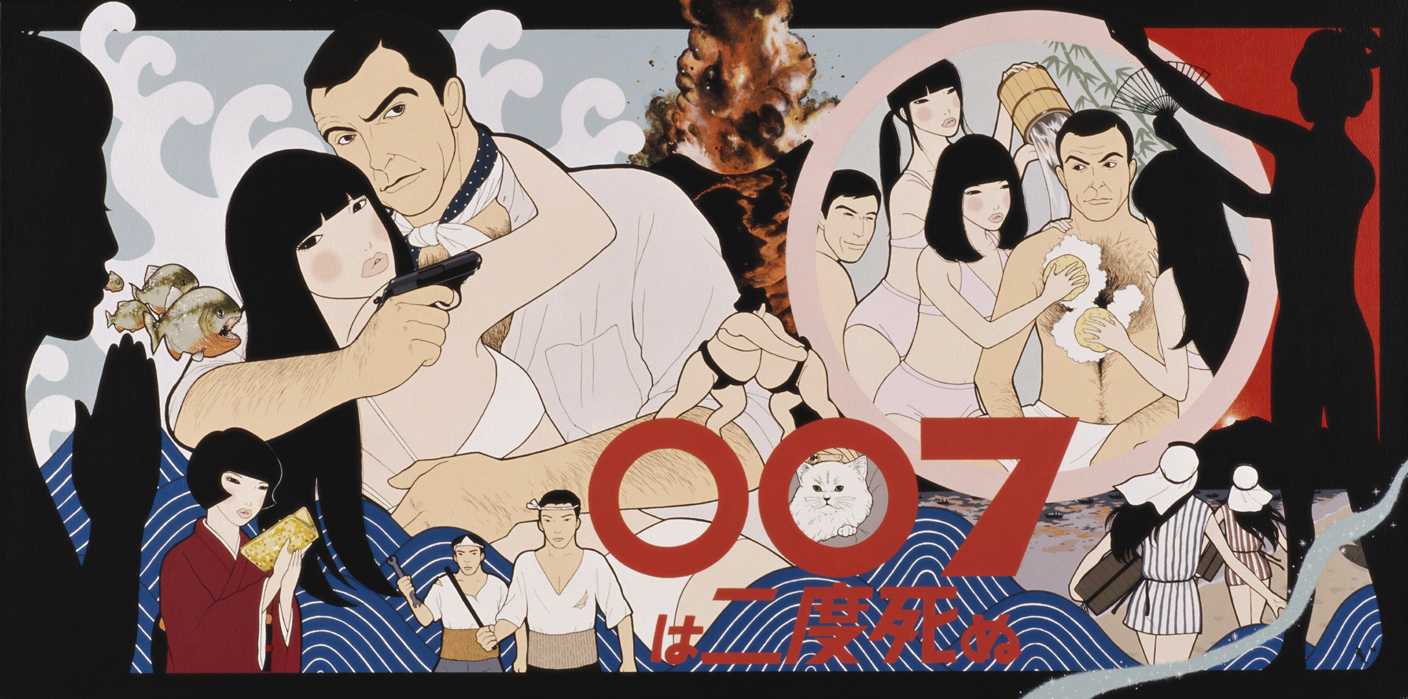





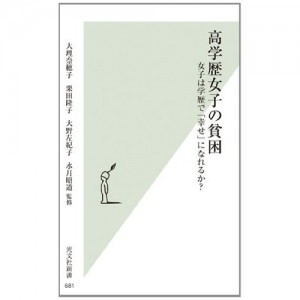

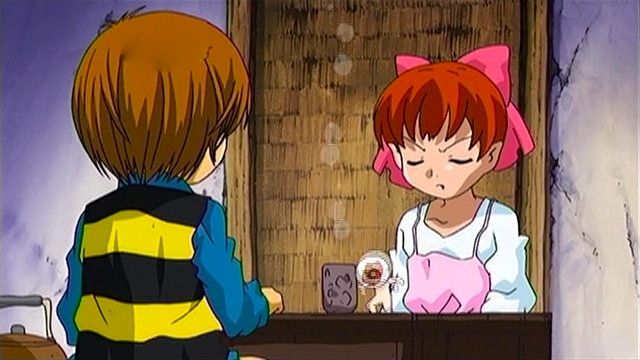


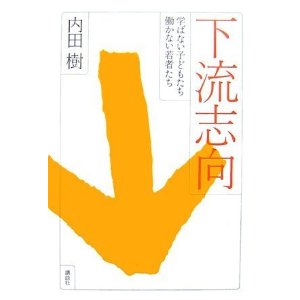
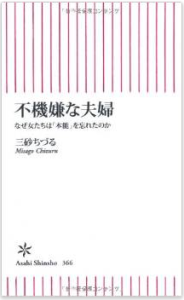 As long as time immemorial, being a woman in Japan meant the rawest of deals. The long, long tradition of top-down patriarchy held that women were good for of either two things: sexual slavery or household drudgery. Once a woman got past her reproductive years, she was expected to control the younger women in the house, which mostly meant bullying the daughter-in-law and
As long as time immemorial, being a woman in Japan meant the rawest of deals. The long, long tradition of top-down patriarchy held that women were good for of either two things: sexual slavery or household drudgery. Once a woman got past her reproductive years, she was expected to control the younger women in the house, which mostly meant bullying the daughter-in-law and 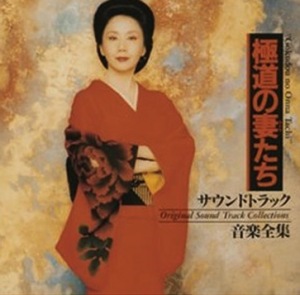

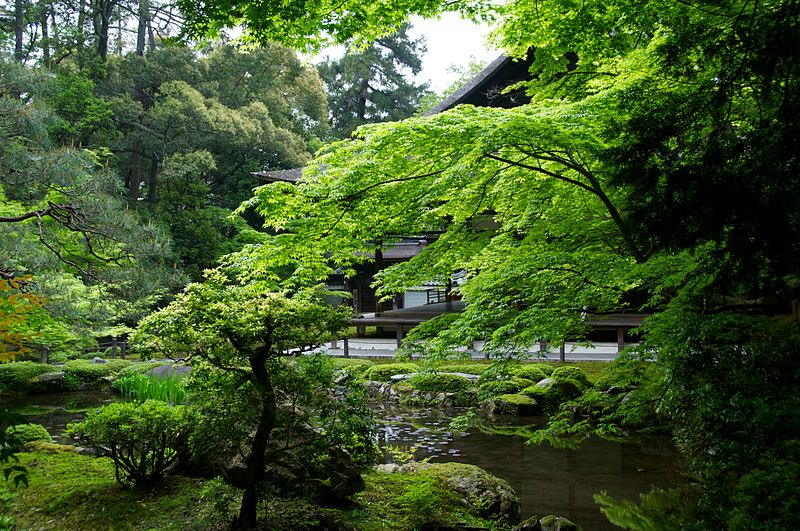
 This question will be on the mind and haunt your waking hours after reading “The Only Woman in the Room” by Beate Sirota Gordon. In this memoir, she takes us through the various events in her life made remarkable by the fact that in late 1945, she became a member on the US Occupation team that drew up Japan’s National Constitution. Not only was she the only woman in the room, she was just 22 years old.
This question will be on the mind and haunt your waking hours after reading “The Only Woman in the Room” by Beate Sirota Gordon. In this memoir, she takes us through the various events in her life made remarkable by the fact that in late 1945, she became a member on the US Occupation team that drew up Japan’s National Constitution. Not only was she the only woman in the room, she was just 22 years old.